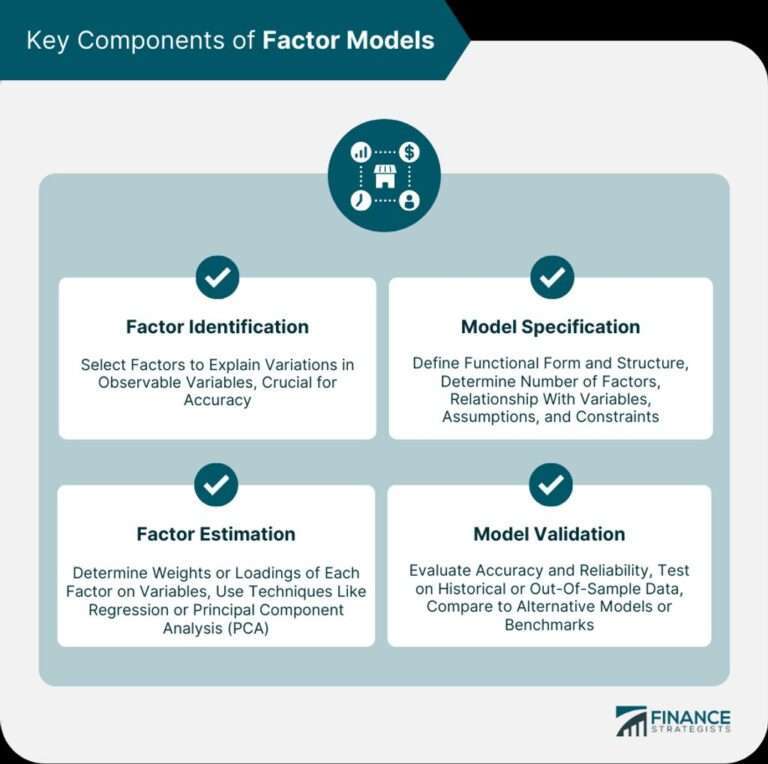What is Conversion Rate Optimization?
Overview
What is Conversion Rate Optimization?
Conversion Rate Optimization (CRO) is the process of improving the percentage of website visitors who take a desired action, such as making a purchase or filling out a form. It involves analyzing user behavior, identifying barriers to conversion, and implementing strategies to increase the likelihood of conversion. CRO is essential for businesses looking to maximize the effectiveness of their online presence and drive more revenue. By optimizing the conversion rate, businesses can increase their return on investment (ROI) and achieve their goals more efficiently.
Why is Conversion Rate Optimization Important?
Conversion Rate Optimization (CRO) is crucial for businesses looking to maximize their online performance and drive more conversions. By optimizing the conversion rate, businesses can effectively improve their return on investment (ROI) and make the most out of their marketing efforts. CRO involves analyzing user behavior, identifying areas of improvement, and implementing strategies to enhance the user experience and streamline the conversion process. It helps businesses understand what works and what doesn’t, allowing them to make data-driven decisions and continuously improve their content and website. With CRO, businesses can increase their conversion rates, generate more leads, and ultimately boost their revenue. To achieve optimal results, businesses should focus on creating compelling and relevant content, designing an intuitive and user-friendly website, and implementing effective call-to-actions. By prioritizing CRO, businesses can maximize their PPC spend and achieve long-term success in the digital landscape.
Key Metrics for Conversion Rate Optimization
When it comes to optimizing conversion rates, there are several key metrics that you need to track and analyze. One of the most important metrics is the conversion rate, which measures the percentage of visitors who take a desired action on your website, such as making a purchase or filling out a form. Another important metric is the bounce rate, which indicates the percentage of visitors who leave your website without taking any action. By tracking these metrics, you can identify areas for improvement and make data-driven decisions to optimize your website’s performance. Additionally, it’s important to track the average session duration and pages per session metrics, as they provide insights into how engaged your visitors are with your content. By analyzing these metrics, you can identify which pages or sections of your website are most effective in engaging and converting visitors. To ensure an effective webpage, it’s crucial to continuously monitor and analyze these key metrics and make necessary adjustments to improve your conversion rates.
Content Strategy
Understanding Your Target Audience
In order to optimize conversion rates, it is crucial to have a deep understanding of your target audience. This involves conducting thorough research to identify their needs, preferences, and pain points. By gaining insights into their demographics, psychographics, and behavior patterns, you can tailor your content to resonate with them on a personal level. Additionally, it is important to segment your audience based on different criteria such as age, location, and interests, as this allows for more targeted and effective content creation. By understanding your target audience, you can create compelling and relevant content that addresses their specific needs and desires, ultimately boosting conversions. To further enhance your understanding, consider utilizing analytics tools to track user behavior and engagement metrics, which can provide valuable insights into how your audience interacts with your content and website. By continuously analyzing and optimizing your content strategy based on these insights, you can ensure that you are effectively reaching and engaging your target audience, leading to higher conversion rates.
Creating Compelling and Relevant Content
When it comes to creating compelling and relevant content, there are several key insights to keep in mind. First and foremost, understanding your target audience is crucial. By conducting thorough research and analysis, you can identify their needs, preferences, and pain points, allowing you to tailor your content specifically to them. Additionally, it’s important to focus on creating high-quality, valuable content that provides solutions and answers to your audience’s questions. This not only establishes your credibility and expertise but also keeps your audience engaged and coming back for more. Furthermore, optimizing your content for SEO is essential for improving its visibility and reach. By incorporating relevant keywords, optimizing meta tags, and ensuring proper formatting, you can enhance your content’s search engine ranking and attract more organic traffic. To take your content strategy to the next level, consider using Unifire, a powerful tool that can help you scale your content the smart way. With Unifire, you can automate content creation, analyze performance data, and optimize your content for maximum conversions. Visit Unifire’s website to learn more and start boosting your content performance today.
Optimizing Content for SEO
When it comes to optimizing content for SEO, there are several key insights to keep in mind. First and foremost, keyword research is crucial. By identifying the right keywords to target, you can ensure that your content is relevant and will rank well in search engine results. Additionally, on-page optimization is important. This includes optimizing your title tags, meta descriptions, and headings to include relevant keywords. High-quality content is also essential for SEO. Search engines value content that is informative, well-written, and provides value to users. Finally, link building is another important aspect of SEO. By acquiring high-quality backlinks from reputable websites, you can improve your website’s authority and visibility in search engine rankings.
To optimize your content for SEO, follow these steps:
- Conduct thorough keyword research to identify the right keywords to target.
- Optimize your title tags, meta descriptions, and headings with relevant keywords.
- Create high-quality, informative content that provides value to users.
- Build high-quality backlinks from reputable websites.
For more in-depth guidance on optimizing your content for SEO, check out Unifire and start boosting your website’s visibility today!
User Experience
Designing an Intuitive and User-Friendly Website
When it comes to designing an intuitive and user-friendly website, there are several key insights to keep in mind. First and foremost, understanding your target audience is crucial. By conducting thorough research and analysis, you can gain valuable insights into their preferences, behaviors, and needs. This will allow you to create a website that resonates with your audience and provides a seamless user experience.
Additionally, it is important to streamline the conversion process on your website. This means removing any unnecessary steps or barriers that may hinder users from completing their desired actions. By simplifying the process and making it as straightforward as possible, you can increase the likelihood of conversions.
Implementing effective call-to-actions (CTAs) is another essential aspect of website design. CTAs act as signposts that guide users towards the desired action, whether it’s making a purchase, signing up for a newsletter, or filling out a form. By strategically placing CTAs throughout your website and making them visually appealing, you can encourage users to take the desired action.
In conclusion, designing an intuitive and user-friendly website is crucial for optimizing conversion rates. By understanding your target audience, streamlining the conversion process, and implementing effective CTAs, you can create a website that not only attracts users but also converts them into customers.
Ready to optimize your website for better conversion rates? Visit Unifire to learn more about how their tools can help you improve your website’s performance.
Streamlining the Conversion Process
After understanding your target audience and creating compelling and relevant content, the next crucial step in optimizing conversion rates is streamlining the conversion process. This involves designing an intuitive and user-friendly website that guides users seamlessly through the conversion funnel. By implementing effective call-to-actions strategically placed throughout the site, you can prompt users to take the desired actions. A key insight to remember is that optimizing the content for SEO is essential to drive organic traffic and increase the chances of conversion. By incorporating relevant keywords and optimizing meta tags, headings, and image alt text, you can improve your website’s visibility in search engine results. SEO to conversion is a vital aspect of streamlining the conversion process, as it ensures that your content is reaching the right audience and attracting qualified leads. To streamline the conversion process and boost content performance, consider using Unifire, a platform that helps you turn various forms of content, such as webinars and podcasts, into high-quality, engaging content for multiple channels. With Unifire, you can easily scale your content creation efforts and optimize your content for maximum conversion potential.
Implementing Effective Call-to-Actions
After understanding the importance of effective call-to-actions (CTAs) in driving conversions, it is crucial to implement them strategically throughout your website. CTAs serve as guideposts for users, directing them towards the desired action and encouraging them to take the next step in the conversion process. When designing CTAs, consider the following best practices:
- Placement: Position CTAs prominently on your webpages, ensuring they are easily visible and accessible.
- Clarity: Use clear and concise language that clearly communicates the desired action.
- Design: Make CTAs visually appealing and attention-grabbing to capture users’ attention.
- Relevance: Ensure that CTAs align with the content and context of the page, providing a seamless user experience.
By implementing effective CTAs, you can significantly increase your conversion rates and drive more meaningful interactions with your audience. To maximize the impact of your CTAs, consider using Unifire, a powerful tool that can help you optimize your call-to-actions and improve your overall content performance. Get started with Unifire today and see the difference it can make in your conversion rates.
How to Implement Effective CTAs:
- Identify the desired action: Determine the specific action you want users to take, such as signing up for a newsletter or making a purchase.
- Create compelling copy: Craft persuasive and concise messaging that encourages users to take the desired action.
- Design visually appealing CTAs: Use eye-catching colors, fonts, and graphics to make your CTAs stand out.
- Test and optimize: Continuously test different variations of your CTAs to identify what resonates best with your audience and optimize accordingly.
With a well-planned and executed call-to-action strategy, you can enhance your content’s performance and drive higher conversion rates.
Testing and Analysis
A/B Testing and Multivariate Testing
A/B testing and multivariate testing are crucial techniques in conversion rate optimization. These methods allow you to experiment with different variations of your website or content to determine which ones lead to the highest conversion rates. A/B testing involves comparing two versions of a webpage or element, while multivariate testing involves testing multiple variations simultaneously. By systematically testing different elements such as headlines, layouts, colors, and call-to-action buttons, you can identify the most effective combination that boosts sales. It is important to gather data and analyze the results to make data-driven decisions. Implementing A/B testing and multivariate testing can significantly improve your conversion rates and ultimately drive more revenue for your business.
Analyzing User Behavior and Conversion Funnel
Understanding user behavior and analyzing the conversion funnel are crucial steps in optimizing conversion rates. By gaining insights into how users interact with your website and navigate through the conversion process, you can identify pain points and areas for improvement. This data-driven approach allows you to make informed decisions on optimizing your website’s design, content, and call-to-actions. Additionally, analyzing user behavior and the conversion funnel helps you understand which channels and touchpoints are most effective in driving conversions. By leveraging this information, you can allocate your resources and marketing efforts more effectively to maximize your conversion rate. To further enhance your conversion rate optimization efforts, consider implementing SEO-optimized content. By creating content that is tailored to your target audience’s search intent and optimized for search engines, you can attract more qualified traffic and increase the likelihood of conversions. To learn more about how to optimize your content for SEO, check out Unifire.
Iterative Optimization and Continuous Improvement
Throughout the article, we have discussed various strategies and techniques for optimizing conversion rates and boosting content performance. One key insight is the importance of iterative optimization and continuous improvement. This involves constantly analyzing user behavior and conversion funnels, conducting A/B testing and multivariate testing, and making data-driven decisions to enhance campaign performance. By continuously refining and optimizing our content and user experience, we can maximize conversion rates and achieve better results. To take your conversion rate optimization efforts to the next level, consider using Unifire. Unifire is a powerful tool that can help you streamline the content creation process, generate unique and compelling content, and extract value from every waking hour. With Unifire, you can scale your content production and achieve remarkable results.
Conclusion
Summary of Key Takeaways
After diving into the world of conversion rate optimization, it is clear that understanding your target audience is crucial for success. Creating compelling and relevant content that resonates with your audience is essential, as is optimizing that content for SEO to increase visibility. Designing an intuitive and user-friendly website, streamlining the conversion process, and implementing effective call-to-actions are all key factors in improving user experience and driving conversions. A/B testing and multivariate testing, along with analyzing user behavior and the conversion funnel, provide valuable insights for iterative optimization and continuous improvement. In conclusion, conversion rate optimization requires a comprehensive approach that combines a deep understanding of your audience, strategic content creation, seamless user experience design, and data-driven testing and analysis. To take your conversion rates to the next level, consider leveraging Unifire, a powerful tool that helps scale and optimize your content creation process. With Unifire, you can turn your webinars, podcasts, and conference talks into unique and valuable content that resonates with your audience. Start winning the content game today and unlock the full potential of your content strategy.
Future Trends in Conversion Rate Optimization
As technology continues to advance, the future of conversion rate optimization (CRO) holds exciting possibilities. Here are some key trends to watch out for:
- Personalization: Tailoring content and experiences to individual users based on their preferences and behaviors will become increasingly important.
- Artificial Intelligence: AI-powered tools and algorithms will play a significant role in analyzing data, identifying patterns, and making data-driven decisions to optimize conversion rates.
- Voice Search Optimization: With the rise of voice assistants like Siri and Alexa, optimizing content for voice search will be crucial for improving conversion rates.
- Mobile Optimization: As more users browse and make purchases on mobile devices, optimizing websites and content for mobile will be essential.
To stay ahead in the ever-evolving world of CRO, it’s important to embrace these trends and leverage the power of technology. If you’re ready to take your conversion rates to the next level, consider partnering with Unifire, a leading CRO platform that combines AI-driven insights with human expertise. Visit Unifire to learn more and start optimizing your content for maximum conversions.
Final Thoughts
In conclusion, optimizing conversion rates is crucial for businesses looking to maximize their online success. By implementing conversion rate optimization strategies, such as understanding your target audience, creating compelling and relevant content, and designing an intuitive and user-friendly website, you can significantly improve your chances of achieving higher conversions. Additionally, testing and analyzing user behavior, utilizing A/B testing and multivariate testing, and continuously iterating and optimizing your content and conversion funnel are essential for long-term success. As the digital landscape continues to evolve, it is important to stay updated on the latest trends in conversion rate optimization and adapt your strategies accordingly. By prioritizing depth over high-level explanations and consistently striving for improvement, you can ensure that your content performs at its best and drives meaningful results for your business.
To learn more about optimizing your conversion rates and boosting your content performance, visit Unifire and discover our comprehensive suite of conversion rate optimization tools and resources.
How to Optimize Conversion Rates: A Practical Guide
- Understand your target audience
- Create compelling and relevant content
- Optimize your content for SEO
- Design an intuitive and user-friendly website
- Streamline the conversion process
- Implement effective call-to-actions
- Perform A/B testing and multivariate testing
- Analyze user behavior and conversion funnel
- Continuously iterate and optimize
- Stay updated on the latest trends
By following these steps and consistently refining your strategies, you can improve your conversion rates and drive greater success for your online business.
In conclusion, Unifire is the ultimate tool for extracting summaries, keywords, and titles from your podcast and repurposing your content. With Unifire, you can save time and effort by automating the process of creating engaging content. Whether you’re a podcaster, content creator, or marketer, Unifire can help you maximize the value of your podcast episodes. Start using Unifire today and unlock the full potential of your podcast content.







